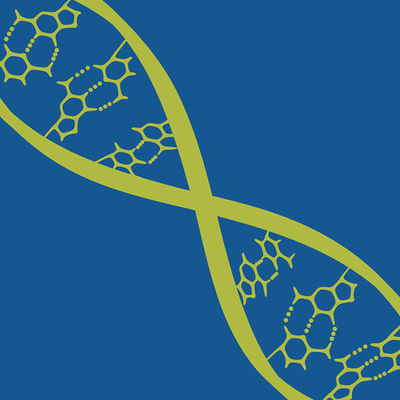预约演示
更新于:2025-05-07
APCS
更新于:2025-05-07
基本信息
别名 9.5S alpha-1-glycoprotein、amyloid P component, serum、APCS + [8] |
简介 Can interact with DNA and histones and may scavenge nuclear material released from damaged circulating cells. May also function as a calcium-dependent lectin. |
关联
5
项与 APCS 相关的药物靶点 |
作用机制 APCS抑制剂 |
在研适应症 |
最高研发阶段临床2期 |
首次获批国家/地区- |
首次获批日期1800-01-20 |
靶点 |
作用机制 APCS调节剂 |
在研机构 |
原研机构 |
在研适应症 |
最高研发阶段临床2期 |
首次获批国家/地区- |
首次获批日期1800-01-20 |
靶点 |
作用机制 APCS抑制剂 |
在研适应症 |
非在研适应症 |
最高研发阶段临床2期 |
首次获批国家/地区- |
首次获批日期1800-01-20 |
22
项与 APCS 相关的临床试验ISRCTN12950872
A Phase Ia, Randomized, Investigator- and Subject-Blinded, Placebo-Controlled Study to Evaluate the Safety, Tolerability, and Pharmacokinetics of Single-Ascending Doses of RO7490677 in Healthy Volunteers
开始日期2022-07-07 |
申办/合作机构- |
ISRCTN59409907
A phase 1 double-blind, randomized, two-arm, two-way crossover, sequential two-stage study to assess the pharmacokinetic comparability of first and second generation RO7490677 (recombinant human pentraxin-2; rhPTX-2) drug products in healthy subjects
开始日期2022-06-30 |
申办/合作机构- |
CTR20212126
一项评价 PRM-151 治疗特发性肺纤维化 (IPF) 患者的长期安全性和有效性的 III 期、开放性扩展研究
本研究将评价在特发性肺纤维化患者中进行开放性PRM-151治疗的长期安全性、疗效和药代动力学。
开始日期2022-04-12 |
申办/合作机构 |
100 项与 APCS 相关的临床结果
登录后查看更多信息
100 项与 APCS 相关的转化医学
登录后查看更多信息
0 项与 APCS 相关的专利(医药)
登录后查看更多信息
1,029
项与 APCS 相关的文献(医药)2025-06-01·Marine Pollution Bulletin
Seasonal dynamics of lipophilic marine algal toxins in water body and sediment environments of nearshore mariculture areas in northern China
Article
作者: He, Xiuping ; Chen, Junhui ; Li, Xianguo ; Fan, Shengqing ; Sheng, Cancan
2025-05-01·Nature Reviews Endocrinology
Enhancing adipose tissue plasticity: progenitor cell roles in metabolic health
Review
作者: Dussaud, Sébastien ; Clément, Karine ; Lambert, Mélanie ; Marcelin, Geneviève ; Lecoutre, Simon ; Maqdasy, Salwan ; Dugail, Isabelle ; Gautier, Emmanuel L ; Abatan, Jimon Boniface ; Rebière, Clémentine
2025-05-01·Veterinary Microbiology
Serum amyloid P component suppresses porcine epidemic diarrhea virus replication through TLR4-mediated IFN-β signaling pathway
Article
作者: Zhu, Huixin ; Liu, Mingyu ; Xu, Yufan ; Lu, Xinchang ; Wang, Xianwei ; Bai, Juan ; Jiang, Ping ; Yang, Zhen
48
项与 APCS 相关的新闻(医药)2025-04-30
·小药说药
PD-1/PD-L1基本信息PD-1:PD-1属于CD28超家族,由PDCD1基因编码,包含5个外显子。PD-1蛋白包含一个IgV型的胞外域、一个柄状结构域,一个跨膜域和一个胞内域,胞内域包含免疫受体酪氨酸基抑制性基序(ITIM)和免疫受体酪氨酸基开关基序(ITSM)。PD-L1:PD-L1属于B7家族,由CD274基因编码,是一个33kDa的I型跨膜蛋白,包含290个氨基酸残基。PD-L1包含IgV样和IgC样胞外域、一个疏水的跨膜域和一个短的胞内尾,其中也包含ITIM和ITSM基序。PD-1及其配体PD-L1的结构示意图PD-1在不同免疫细胞中的作用PD-1在T细胞、B细胞、NK细胞、树突状细胞(DCs)和巨噬细胞上的表达上调。PD-1与PD-L1结合后,通过招募SHP-2和SHP-1去磷酸化,阻断下游信号传导,从而抑制B细胞和T细胞的激活、增殖以及细胞因子产生,同时也抑制巨噬细胞、树突状细胞和自然杀伤细胞的功能。肿瘤细胞和树突状细胞均可表达PD-1和PD-L1。巨噬细胞上的PD-1可由脂多糖(LPS)刺激诱导。具体来说,PD-1在不同免疫细胞中的作用如下:T细胞:PD-1在T细胞激活、耐受和耗竭中起关键作用,影响肿瘤发生、炎症和感染。PD-1的异常表达与多种疾病相关,包括黑色素瘤、结直肠癌、非小细胞肺癌等。B细胞:PD-1通过抑制B细胞激活、增殖和细胞因子产生来调节B细胞功能。PD-1在B细胞中的异常表达与类风湿性关节炎、某些肿瘤和乙型肝炎相关。树突状细胞:PD-1在DCs上的表达与免疫抑制相关,影响T细胞的激活和功能。NK细胞:PD-1在NK细胞上的表达与多种病理状态相关,影响其抗肿瘤功能。巨噬细胞:PD-1在巨噬细胞上的表达与免疫抑制和肿瘤进展相关。其他细胞:PD-1在其他免疫细胞(如ILCs、单核细胞和中性粒细胞)中的作用仍在研究中。PD-1在不同免疫细胞中的作用示意图T细胞与PD-1/PD-L1轴T细胞通过TCR和PD-1的相互作用:a)PD-1与PD-L1是维持免疫平衡的关键分子。正常情况下,抗原呈递细胞(APCs)与T细胞的相互作用会阻断PD-1/PD-L1轴。在这种情况下,APCs会抑制其PD-L1与T细胞的PD-1的相互作用,通过与PD-1的结合,这种机制促进了T细胞通过其MHC-TCR和多条信号通路的正常活性,能够有效减少自身免疫细胞对自身组织的攻击。此外,PD-1/PD-L1在细胞黏附、迁移、记忆T细胞的形成以及代谢等诸多方面也发挥着重要作用,还参与组织和器官的发育、再生等过程。b)异常情况下,机体允许T细胞的PD-1与肿瘤细胞的PD-L1相互作用。在这种情况下,这种作用会阻断T细胞的正常作用途径,导致细胞因子产生功能障碍、增殖减少和细胞毒性降低,从而促进肿瘤的进展。T细胞与PD-1/PD-L1在不同情况下的作用机制示意图PD-1/PD-L1轴在肿瘤微环境中起着关键作用,通过中和免疫系统促进肿瘤进展和逃逸。PD-L1与T细胞上的PD-1结合会导致T细胞功能障碍、中和、耗竭以及IL-10的产生,从而促进肿瘤的生长。此外,PD-1/PD-L1轴激活PI3K/AKT、MAPK和JAK-STAT等信号通路,这些通路对细胞增殖、存活和免疫逃逸至关重要。PD-1/PD-L1轴的免疫逃逸机制:抗原呈递细胞(APCs)通过主要组织相容性复合体(MHC)将肿瘤抗原递呈给T细胞受体(TCR),当MHC-抗原复合物特异性地结合到TCR时,会触发一系列信号转导,包括磷脂酰肌醇信号通路和丝裂原活化蛋白激酶信号通路,从而激活效应T细胞的免疫反应。当PD-L1与PD-1结合时,PD-1细胞质区域的ITSM和ITIM结构域中的酪氨酸残基发生磷酸化,招募并激活SHP2。随后,被招募的SHP-2介导TCR相关CD3和ZAP70信号复合体的去磷酸化,同时抑制CD28共刺激信号。这进一步减弱了下游TCR信号强度和细胞因子(如IL-2)的分泌,最终抑制了T细胞的功能。免疫逃逸机制示意图PD-1/PD-L1的表达调控以及相关信号通路PD-1:PD-1的表达受到多种因素的调控,例如抗原信号刺激以及炎症因子等。在急性感染和慢性感染中,PD-1表达的调控机制存在显著差异。在肿瘤免疫环境中,持续的TCR信号刺激可促使PD-1表达上调,进而诱导免疫耐受的发生。PD-1信号通路概述:PD-1对TCR信号的影响:如上文所述。PD-1对γc家族细胞因子信号的影响:PD-1通过直接靶向γc来拮抗γc家族细胞因子介导的免疫激活,通过SHP-2去磷酸化γcY357,导致其失活,并通过MARCH5介导的K27连接多泛素化和溶酶体降解γc。PD-1信号通路简略示意图PD-1在肿瘤细胞中的复杂调控机制:a)肿瘤细胞内源性PD-1的细胞内信号传导。PD-1的免疫球蛋白样细胞外结构域与PD-L1的免疫球蛋白样细胞外结构域相互作用,触发下游信号通路,包括mTOR信号通路、Ras/MAPK信号通路、AKT/ERK信号通路、Hippo信号通路和Wnt/β-catenin信号通路。这些信号通路在多种生物学过程中发挥着关键作用,如增殖、凋亡、细胞周期进程、上皮-间质转化(EMT)、转移扩散、线粒体活性氧(mROS)的产生、放化疗耐药性的形成以及癌症干细胞特性的维持。例如,PD-1信号通路在肿瘤细胞中的激活可导致mTOR通路下游分子的磷酸化增加,如核糖体S6蛋白(p-S6)。这些信号通路中关键分子的磷酸化可以对肿瘤细胞的行为和特性产生一系列影响,促进肿瘤的进展、侵袭性以及对治疗干预的耐药性。b)翻译后调控。翻译后调控的一个关键方面是FBW7作为PD-1蛋白的E3泛素连接酶的作用。FBW7促进PD-1在Lys233残基处的K48连接的多泛素化,从而标记其被蛋白酶体降解。这一过程对于控制肿瘤细胞中PD-1蛋白的水平至关重要。另一个重要的翻译后调控机制涉及MDM2,它增强了糖基化PD-1与糖苷酶NGLY1之间的结合。这种相互作用促进了PD-1的脱糖基化和由NGLY1介导的泛素化降解。此外,由FUT8介导的PD-1上特定残基(N49和N74)的岩藻糖基化对于PD-1的功能性定位至关重要。核心岩藻糖基化的缺失与PD-1被泛素-蛋白酶体系统降解的增强有关。(c)转录调控。PDCD1的转录受到多种转录因子的调控,包括p53、YB-1、NF-κB、CYY61/CTGF和P300/CBP。PD-1在肿瘤细胞中的复杂调控机制PD-L1:基因层面:PD-L1启动子区域的表观遗传修饰,包括DNA甲基化、组蛋白甲基化和乙酰化,在PD-L1表达的调控中也起着重要作用。例如,TNF-α/TGF-β1通过降低DNMT1(DNA甲基转移酶)水平诱导PD-L1启动子的去甲基化,导致PD-L1上调,从而发挥免疫抑制作用。在转录水平上,PD-L1表达主要由转录因子调控,包括STAT、MYC、NF-κB、IRF1、AP-1和HIF-1α,以及信号通路效应分子,如MAPK/PI3K/Akt、JAK/STAT3和EGFR/MAPK。PD-L1基因水平上的表达调控示意图转录和翻译后修饰层面:非编码RNA(如miR-34、miR-200和miR-197)可以通过直接结合PD-L1的3'非翻译区(3'UTR)来抑制PD-L1 mRNA的表达。PD-L1 mRNA的m6A修饰对于调控PD-L1的表达和稳定性以及介导肿瘤免疫逃逸至关重要。例如,去甲基化酶(如FTO和ALKBH)可以去除PD-L1 mRNA上的m6A修饰,增加其稳定性,并促进PD-L1的高表达。METTL3/IGF2BP3轴通过上调PD-L1 mRNA的m6A修饰来增强其稳定性,从而进一步促进肿瘤免疫逃逸。此外,翻译后修饰,包括磷酸化、泛素化、糖基化和棕榈酰化,可以通过影响PD-L1蛋白在癌细胞中的活性、稳定性和膜表达来调控PD-L1蛋白的表达。PD-L1表达在转录后和翻译后的调控机制不同形式的表达层面:多种转录因子直接参与PD-L1表达的调节,影响其在不同细胞环境中的上调。一旦合成,PD-L1 mRNA转移到细胞质中,在那里被翻译成蛋白质,随后呈现在癌细胞表面。这种表达有助于免疫逃逸机制的关键相互作用。非编码RNA(如miRNA、circRNA和lncRNA)在诱导PD-L1降解方面发挥重要作用。这些ncRNA通过各种机制途径调节PD-L1的水平,从而降低其总体表达。PD-L1还被包裹在细胞外囊泡中,特别是以小囊泡的形式出现,介导细胞间通信并影响肿瘤动态。这种包裹途径通过促进免疫抑制信号的系统性传播,在推进肿瘤免疫逃逸策略中起到了关键作用。PD-L1多种形式的表达谱PD-1/PD-L1信号通路机制概述如下图:PD-1/PD-L1的病理作用机制PD-L1在癌症中的作用:PD-L1在多种癌症中表达上调,与肿瘤的侵袭性、增殖和预后不良相关。例如,在非小细胞肺癌(NSCLC)中,PD-L1的高表达与肿瘤增殖、侵袭性增加和患者生存率降低相关。在黑色素瘤中,PD-L1在恶性黑色素细胞和免疫细胞上的表达与免疫治疗的抗肿瘤反应相关。在膀胱癌中,PD-L1作为生物标志物与肿瘤分级和疾病进展相关。在前列腺癌中,PD-L1的表达在转移性去势抵抗性前列腺癌(mCRPC)中更高,被认为是高风险患者的不良预后标志物。PD-L1在癌症中的作用简图PD-L1对肿瘤发展的作用:PD-L1不仅促进肿瘤细胞逃避免疫监视,还能以免疫独立的方式促进肿瘤进展。在肿瘤细胞中高表达的PD-L1可以通过与核输入蛋白KPNB1结合进入细胞核,并发挥促癌作用。核PD-L1还可以触发免疫检查点基因(包括PD-L2和VISTA)的上调,从而增强PD-1抑制的抗肿瘤反应。在缺氧条件下,用TNFα和CHX处理可以促进PD-L1的核转位,然后PD-L1与p-Stat3-Y705相互作用。随后,p-Stat3-Y705结合到GSDMC启动子区域,导致GSDMC基因表达上调。此外,GSDMC被caspase-8裂解并激活,触发细胞焦亡以及肿瘤缺氧区域的坏死。PD-L1对肿瘤本身的影响PD-1/PD-L1在移植和自身免疫性疾病中的作用:在器官移植过程中,PD-1在移植组织中浸润的T细胞表面高度表达。PD-1/PD-L1介导的负性调节信号可以抑制T细胞的过度激活,诱导免疫耐受,并在术后有效减少宿主与供体之间的免疫排斥。阻断PD-1/PD-L1会促进移植组织中浸润的T细胞增殖,加剧移植后的免疫排斥反应,并导致严重且持续的组织损伤。同样,PD-1和PD-L1信号之间的平衡被打破也会导致许多自身免疫性疾病的发生,如1型糖尿病(T1DM)、多发性硬化症(MS)、系统性红斑狼疮(SLE)和类风湿关节炎(RA)。PD-1/PD-L1在移植和自身免疫性疾病中的作用示意图PD-1/PD-L1的致瘤机制:PD-1/PD-L1通路促进效应T细胞的耗竭和凋亡。耗竭的T细胞(Tex)表现为高表达抑制性受体(如PD-1、LAG3和TIGIT)、细胞因子(如TNF、IL-2和IFN-γ)分泌减少、代谢改变以及增殖能力和存活能力受损。PD-1/PD-L1通过降低PI3K/Akt/mTOR和S6的磷酸化,同时增强PTEN,促进诱导性调节性T细胞(iTregs)的生成和发展,从而增强Treg细胞的免疫抑制功能并诱导免疫耐受。PD-1/PD-L1可促进肿瘤相关巨噬细胞(TAM)向M2表型极化,释放大量成纤维细胞生长因子、VEGF、TNF-α等细胞因子,促进血管生成并支持癌细胞的免疫抑制、侵袭和转移,加速癌症进展。自然杀伤细胞(NK细胞)上的PD-1与癌细胞上的PD-L1结合,抑制NK细胞的脱颗粒和细胞毒性功能,降低其杀伤肿瘤细胞的能力,促进肿瘤免疫逃逸。使用PD-1和PD-L1抑制剂可能会重新激活上述免疫细胞的抗肿瘤免疫反应。PD-1/PD-L1信号通过对免疫细胞的调控导致肿瘤形成的机制示意图PD-1/PD-L1对肿瘤的代谢作用:PD-1/PD-L1信号通过破坏有氧糖酵解,改变细胞能量合成和代谢途径,从而促进脂肪酸氧化(FAO)成为T细胞的主要能量来源。此外,NAD⁺代谢组分NAMPT可以通过Stat1依赖的IFN-γ信号通路增强肿瘤细胞中PD-L1的表达,进而抑制T细胞功能,重塑局部肿瘤微环境,最终对肿瘤的转移、复发和预后产生显著影响。此外,肠道微生物组也可以改善肿瘤进展并增强T细胞免疫反应,提示其在提高PD-1阻断疗法效果方面的潜在应用价值。PD-1/PD-L1信号影响肿瘤代谢的示意图PD-1/PD-L1轴的免疫治疗策略靶向PD-1/PD-L1轴的单抗药物:靶向PD-1/PD-L1轴的双抗药物:BsAbs的分类和作用机制:BsAbs分为非IgG格式和IgG格式,IgG-like剂保留Fc介导的抗体效应功能,而Fc-free BsAbs缺乏这些功能。BiTEs(双特异性T细胞接合剂)和Triomabs是主要的BsAb格式。BsAbs的Fc域可能导致非靶向毒性,如细胞因子释放综合征(CRS)。抗TGFβ×PD-L1 BsAb:TGFβ在癌症免疫学和免疫治疗中扮演双重角色,既能抑制肿瘤发生,也能促进肿瘤进展。M7824是一种新型的双功能融合蛋白,结合了抗PD-L1域和TGFβ受体,同时靶向两个免疫抑制途径;M7824在非小细胞肺癌(NSCLC)患者中显示出显著的临床疗效。抗CD47×PD-L1 BsAb:CD47在肿瘤细胞上表达,向巨噬细胞传递“不要吃我”的信号。抗CD47×PD-L1 BsAb通过阻断CD47/SIRPα和PD-1/PD-L1信号通路,增强抗肿瘤免疫反应。抗VEGF/PD-1和抗VEGF/PD-L1 BsAb:VEGF由缺氧TME诱导,促进血管增生和免疫抑制。抗VEGF×PD-1和抗VEGF×PD-L1 BsAbs展示了在多种癌症中抑制血管生成和激活免疫反应的潜力。抗4-1BB×PD-L1 BsAb:4-1BB(CD137)是一种在激活的NK和T细胞上表达的共刺激分子。抗4-1BB×PD-L1 BsAb通过结合4-1BB激动剂与PD-1/PD-L1抑制剂,增强肿瘤特异性T细胞反应。抗LAG-3×PD-L1 BsAb:LAG-3在激活的T细胞和NK细胞上表达,传递抑制信号。抗LAG-3×PD-L1 BsAb通过阻断LAG-3和PD-1/PD-L1信号通路,增强抗肿瘤免疫反应。抗PD-1/CTLA-4 BsAb:CTLA-4和PD-1是抑制T细胞功能的免疫检查点。抗PD-1/CTLA-4 BsAb通过同时靶向PD-1和CTLA-4,增强抗肿瘤免疫反应。靶向PD-1/PD-L1轴的PROTACs:PROTACs是一种新型的药物设计技术,通过招募E3泛素连接酶来靶向降解特定蛋白质。包括Compound 22、AC-1、AbTACs、CDTACs、Compound 21a、Peptide-PROTACs、R2PD1、SP-PROTAC和Liner peptide PROTAC。这些PROTACs通过不同的机制降解PD-1/PD-L1蛋白,从而增强免疫治疗的效果。例如,Compound 22可以通过溶酶体依赖途径降解PD-L1蛋白,而AC-1可以通过招募RNF43 E3连接酶来降解PD-L1(如下图)。靶向PD-1/PD-L1轴的小分子抑制剂:联合治疗策略:1. 化疗与PD-1/PD-L1联合:化疗药物如蒽环类和奥沙利铂可诱导免疫原性细胞死亡,刺激抗肿瘤免疫反应。2. 放疗与PD-1/PD-L1联合:放疗可诱导免疫原性细胞死亡,增强T细胞浸润,扩大肿瘤微环境(TME)中的T细胞受体(TCR)库;放疗可上调肿瘤细胞上的PD-L1表达,增加MHC-I表达,缓解对PD-1/PD-L1抑制剂的耐药性。3. 抗血管生成抑制剂与PD-1/PD-L1联合:抗血管生成抑制剂可阻断促血管生成通路,促进血管正常化,改善肿瘤灌注和氧合,恢复缺氧的TME。抗血管生成抑制剂可重塑TME,促进T细胞浸润和树突状细胞(DC)成熟,增强M1型巨噬细胞分化,降低调节性T细胞(Treg)和髓系来源的抑制细胞(MDSC)比例。α-PD-1/PD-L1与化疗、放疗或抗血管生成抑制剂联合使用的协同抗肿瘤效果及机制示意图免疫耐药和副作用1.新辅助免疫治疗的疗效:新辅助免疫治疗,特别是免疫治疗联合化疗,比单药治疗或双免疫治疗能获得更高的ORR、MPR和pCR。例如,在头颈部癌症中,NCT03342911试验显示,nivolumab联合化疗的MPR为65%,pCR为35%。在乳腺癌中,KEYNOTE-522试验显示,pembrolizumab联合化疗的pCR为60%。2. 不良事件:尽管新辅助免疫治疗导致TRAEs增多,但大多数是可接受的,并且不会显著延迟手术。例如,在NCT02919683试验中,nivolumab联合ipilimumab治疗口腔鳞状细胞癌(OCSCC)的ORR为38%,MPR为4%,pCR为3%,且大多数患者经历了irAEs,但没有导致手术延迟。3. 病理缓解与生存率:研究发现,新辅助免疫治疗后达到病理缓解的患者,术后DFS较未达到病理缓解的患者有所提高。例如,在NCT02641093试验中,pembrolizumab联合化疗的ORR为8%,MPR为27%,pCR为13%。4. PD-1与PD-L1抑制剂的比较:在大多数实体瘤中,PD-1和PD-L1单药治疗的疗效没有显著差异,但PD-L1治疗引起的irAEs发生率显著低于PD-1。例如,在肺癌中,PD-1单药治疗的ORR为25%,而PD-L1单药治疗的ORR为22%。5. 手术相关并发症:大多数试验中未报告治疗相关的手术延迟。一些患者因疾病进展、严重的TRAEs或高手术风险而未接受手术,或拒绝手术。新辅助免疫治疗的ORR、MPR、pCR和不良事件PD-1/PD-L1轴在不同适应症的应用PD-1/PD-L1轴在多种适应症中都有应用肿瘤领域• 非小细胞肺癌(NSCLC):PD-1/PD-L1抑制剂已成为晚期NSCLC的重要治疗手段。如帕博利珠单抗被批准用于PD-L1高表达(TPS≥50%)的初治晚期NSCLC患者的一线治疗,其通过阻断PD-1/PD-L1轴,增强T细胞对肿瘤细胞的识别和杀伤能力,延长患者生存期。此外,阿特珠单抗联合化疗也被用于晚期NSCLC的一线治疗,可提高疗效和生存率。• 小细胞肺癌(SCLC):度伐利尤单抗联合化疗在SCLC的治疗中显示出一定疗效,能够延长患者的无进展生存期和总生存期,为SCLC患者提供了新的治疗选择。• 黑色素瘤:纳武利尤单抗和帕博利珠单抗等PD-1抑制剂在黑色素瘤的治疗中取得了显著成效,可显著提高患者的客观缓解率和生存率,已成为晚期黑色素瘤的一线治疗药物。此外,PD-1抑制剂还可与CTLA-4抑制剂联合使用,进一步增强免疫治疗效果。• 肾癌:PD-1/PD-L1抑制剂在肾癌的治疗中也显示出良好的疗效。例如,阿特珠单抗联合贝伐珠单抗被批准用于晚期肾癌的一线治疗,其通过双重免疫机制,抑制肿瘤血管生成和增强抗肿瘤免疫反应,延长患者生存期。• 膀胱癌:阿特珠单抗是首个被批准用于膀胱癌的PD-L1抑制剂,可用于治疗局部晚期或转移性膀胱癌,特别是对铂类化疗耐药或不耐受的患者,可显著提高患者的客观缓解率和生存率。• 头颈部鳞状细胞癌(HNSCC):帕博利珠单抗被批准用于复发或转移性HNSCC的治疗,其通过阻断PD-1/PD-L1轴,增强T细胞对肿瘤细胞的攻击,延长患者生存期。• 结直肠癌(CRC):纳武利尤单抗可用于治疗微卫星高度不稳定(MSI-H)或错配修复缺陷(dMMR)的晚期CRC患者,为这部分患者提供了新的治疗选择。• 肝细胞癌(HCC):纳武利尤单抗单药或联合伊匹木单抗被批准用于晚期HCC的治疗,其通过激活免疫系统,增强对肿瘤细胞的识别和杀伤能力,延长患者生存期。• 胃癌:帕博利珠单抗被批准用于PD-L1 CPS≥1的晚期胃癌或胃食管结合部癌的一线治疗,以及用于二线治疗复发或难治性胃癌患者,可显著提高患者的客观缓解率和生存率。• 食管癌:帕博利珠单抗和纳武利尤单抗等PD-1抑制剂在晚期食管癌的治疗中也显示出良好的疗效,可延长患者的生存期。• 妇科肿瘤:如子宫内膜癌,多塔利单抗被批准用于治疗错配修复缺陷(dMMR)或微卫星高度不稳定(MSI-H)的复发或晚期子宫内膜癌患者,为这部分患者提供了新的治疗选择。• 软组织肉瘤:PD-1/PD-L1抑制剂在软组织肉瘤的治疗中也进行了相关研究,但目前其疗效尚存在一定的争议,部分研究显示PD-L1表达水平可能与治疗反应相关,但不同研究结果存在差异,仍需进一步探索。• 儿童肿瘤:在儿童肿瘤中,PD-L1表达在一些儿童血液肿瘤如霍奇金淋巴瘤、弥漫大B细胞淋巴瘤、急性髓系白血病、急性淋巴细胞白血病和胶质瘤中有所观察到。目前也有相关的临床试验在探索PD-1/PD-L1抑制剂在儿童肿瘤中的应用,如纳武利尤单抗在儿童淋巴瘤中显示出一定的疗效,但在其他儿童实体瘤中单药治疗的活性有限。自身免疫性疾病领域• 系统性红斑狼疮(SLE):有研究表明,SLE患者中PD-1/PD-L1轴的表达存在异常,PD-1/PD-L1轴的调节可能有助于控制SLE的病情活动。一些研究正在探索PD-1/PD-L1抑制剂在SLE治疗中的潜在应用,但目前仍处于早期研究阶段。• 类风湿关节炎(RA):PD-1/PD-L1轴在RA的发病机制中也发挥着重要作用,其调节可能有助于减轻RA患者的炎症反应和关节损伤。相关研究正在进行中,以评估PD-1/PD-L1抑制剂在RA治疗中的安全性和有效性。神经系统疾病领域• 阿尔茨海默病(AD):研究表明,PD-1/PD-L1轴在AD的发病过程中可能参与调节神经炎症反应。通过调节PD-1/PD-L1轴,可能有助于减轻神经炎症,改善认知功能。目前,相关研究仍在探索阶段,以确定PD-1/PD-L1抑制剂在AD治疗中的潜在应用价值。• 帕金森病(PD):PD-1/PD-L1轴在帕金森病的发病机制中也受到关注。其调节可能对帕金森病的神经保护和疾病进展产生影响,但目前仍处于基础研究阶段,尚未进入临床应用。其他领域• 感染性疾病:在某些慢性感染性疾病中,如HIV感染、结核病等,PD-1/PD-L1轴的过度激活可能导致免疫细胞的耗竭。通过调节PD-1/PD-L1轴,可能有助于恢复免疫细胞的功能,增强机体对病原体的清除能力。相关研究正在进行中,以探索PD-1/PD-L1抑制剂在感染性疾病治疗中的潜在应用。• 心血管疾病:PD-1/PD-L1轴在动脉粥样硬化等心血管疾病的发生发展中可能发挥一定作用。其调节可能对炎症反应和血管内皮功能产生影响,从而影响心血管疾病的进程。目前,相关研究仍在探索阶段,以确定PD-1/PD-L1抑制剂在心血管疾病治疗中的潜在应用价值。公众号内回复“ADC”或扫描下方图片中的二维码免费下载《抗体偶联药物:从基础到临床》的PDF格式电子书!公众号已建立“小药说药专业交流群”微信行业交流群以及读者交流群,扫描下方小编二维码加入,入行业群请主动告知姓名、工作单位和职务。
免疫疗法细胞疗法
2025-04-24
·医药速览
PD-1/PD-L1基本信息PD-1:PD-1属于CD28超家族,由PDCD1基因编码,包含5个外显子。PD-1蛋白包含一个IgV型的胞外域、一个柄状结构域,一个跨膜域和一个胞内域,胞内域包含免疫受体酪氨酸基抑制性基序(ITIM)和免疫受体酪氨酸基开关基序(ITSM)。PD-L1:PD-L1属于B7家族,由CD277基因编码,是一个33kDa的I型跨膜蛋白,包含290个氨基酸残基。PD-L1包含IgV样和IgC样胞外域、一个疏水的跨膜域和一个短的胞内尾,其中也包含ITIM和ITSM基序。PD-1及其配体PD-L1的结构示意图PD-1在不同免疫细胞中的作用PD-1在T细胞、B细胞、NK细胞、树突状细胞(DCs)和巨噬细胞上的表达上调。PD-1与PD-L1结合后,通过招募SHP-2和SHP-1去磷酸化,阻断下游信号传导,从而抑制B细胞和T细胞的激活、增殖以及细胞因子产生,同时也抑制巨噬细胞、树突状细胞和自然杀伤细胞的功能。肿瘤细胞和树突状细胞均可表达PD-1和PD-L1。巨噬细胞上的PD-1可由脂多糖(LPS)刺激诱导。具体来说,PD-1在不同免疫细胞中的作用如下:T细胞:PD-1在T细胞激活、耐受和耗竭中起关键作用,影响肿瘤发生、炎症和感染。PD-1的异常表达与多种疾病相关,包括黑色素瘤、结直肠癌、非小细胞肺癌等。B细胞:PD-1通过抑制B细胞激活、增殖和细胞因子产生来调节B细胞功能。PD-1在B细胞中的异常表达与类风湿性关节炎、某些肿瘤和乙型肝炎相关。树突状细胞:PD-1在DCs上的表达与免疫抑制相关,影响T细胞的激活和功能。NK细胞:PD-1在NK细胞上的表达与多种病理状态相关,影响其抗肿瘤功能。巨噬细胞:PD-1在巨噬细胞上的表达与免疫抑制和肿瘤进展相关。其他细胞:PD-1在其他免疫细胞(如ILCs、单核细胞和中性粒细胞)中的作用仍在研究中。PD-1在不同免疫细胞中的作用示意图T细胞与PD-1/PD-L1轴T细胞通过TCR和PD-1的相互作用:a)PD-1与PD-L1是维持免疫平衡的关键分子。正常情况下,抗原呈递细胞(APCs)与T细胞的相互作用会阻断PD-1/PD-L1轴。在这种情况下,APCs会抑制其PD-L1与T细胞的PD-1的相互作用,通过与PD-1的结合,这种机制促进了T细胞通过其MHC-TCR和多条信号通路的正常活性,能够有效减少自身免疫细胞对自身组织的攻击。此外,PD-1/PD-L1在细胞黏附、迁移、记忆T细胞的形成以及代谢等诸多方面也发挥着重要作用,还参与组织和器官的发育、再生等过程。b)异常情况下,机体允许T细胞的PD-1与肿瘤细胞的PD-L1相互作用。在这种情况下,这种作用会阻断T细胞的正常作用途径,导致细胞因子产生功能障碍、增殖减少和细胞毒性降低,从而促进肿瘤的进展。T细胞与PD-1/PD-L1在不同情况下的作用机制示意图PD-1/PD-L1轴在肿瘤微环境中起着关键作用,通过中和免疫系统促进肿瘤进展和逃逸。PD-L1与T细胞上的PD-1结合会导致T细胞功能障碍、中和、耗竭以及IL-10的产生,从而促进肿瘤的生长。此外,PD-1/PD-L1轴激活PI3K/AKT、MAPK和JAK-STAT等信号通路,这些通路对细胞增殖、存活和免疫逃逸至关重要。PD-1/PD-L1轴的免疫逃逸机制:抗原呈递细胞(APCs)通过主要组织相容性复合体(MHC)将肿瘤抗原递呈给T细胞受体(TCR),当MHC-抗原复合物特异性地结合到TCR时,会触发一系列信号转导,包括磷脂酰肌醇信号通路和丝裂原活化蛋白激酶信号通路,从而激活效应T细胞的免疫反应。当PD-L1与PD-1结合时,PD-1细胞质区域的ITSM和ITIM结构域中的酪氨酸残基发生磷酸化,招募并激活SHP2。随后,被招募的SHP-2介导TCR相关CD3和ZAP70信号复合体的去磷酸化,同时抑制CD28共刺激信号。这进一步减弱了下游TCR信号强度和细胞因子(如IL-2)的分泌,最终抑制了T细胞的功能。免疫逃逸机制示意图PD-1/PD-L1的表达调控以及相关信号通路PD-1:PD-1的表达受到多种因素的调控,例如抗原信号刺激以及炎症因子等。在急性感染和慢性感染中,PD-1表达的调控机制存在显著差异。在肿瘤免疫环境中,持续的TCR信号刺激可促使PD-1表达上调,进而诱导免疫耐受的发生。PD-1信号通路概述:PD-1对TCR信号的影响:如上文所述。PD-1对γc家族细胞因子信号的影响:PD-1通过直接靶向γc来拮抗γc家族细胞因子介导的免疫激活,通过SHP-2去磷酸化γcY357,导致其失活,并通过MARCH5介导的K27连接多泛素化和溶酶体降解γc。PD-1信号通路简略示意图PD-1在肿瘤细胞中的复杂调控机制:a)肿瘤细胞内源性PD-1的细胞内信号传导。PD-1的免疫球蛋白样细胞外结构域与PD-L1的免疫球蛋白样细胞外结构域相互作用,触发下游信号通路,包括mTOR信号通路、Ras/MAPK信号通路、AKT/ERK信号通路、Hippo信号通路和Wnt/β-catenin信号通路。这些信号通路在多种生物学过程中发挥着关键作用,如增殖、凋亡、细胞周期进程、上皮-间质转化(EMT)、转移扩散、线粒体活性氧(mROS)的产生、放化疗耐药性的形成以及癌症干细胞特性的维持。例如,PD-1信号通路在肿瘤细胞中的激活可导致mTOR通路下游分子的磷酸化增加,如核糖体S6蛋白(p-S6)。这些信号通路中关键分子的磷酸化可以对肿瘤细胞的行为和特性产生一系列影响,促进肿瘤的进展、侵袭性以及对治疗干预的耐药性。b)翻译后调控。翻译后调控的一个关键方面是FBW7作为PD-1蛋白的E3泛素连接酶的作用。FBW7促进PD-1在Lys233残基处的K48连接的多泛素化,从而标记其被蛋白酶体降解。这一过程对于控制肿瘤细胞中PD-1蛋白的水平至关重要。另一个重要的翻译后调控机制涉及MDM2,它增强了糖基化PD-1与糖苷酶NGLY1之间的结合。这种相互作用促进了PD-1的脱糖基化和由NGLY1介导的泛素化降解。此外,由FUT8介导的PD-1上特定残基(N49和N74)的岩藻糖基化对于PD-1的功能性定位至关重要。核心岩藻糖基化的缺失与PD-1被泛素-蛋白酶体系统降解的增强有关。(c)转录调控。PDCD1的转录受到多种转录因子的调控,包括p53、YB-1、NF-κB、CYY61/CTGF和P300/CBP。PD-1在肿瘤细胞中的复杂调控机制PD-L1:基因层面:PD-L1启动子区域的表观遗传修饰,包括DNA甲基化、组蛋白甲基化和乙酰化,在PD-L1表达的调控中也起着重要作用。例如,TNF-α/TGF-β1通过降低DNMT1(DNA甲基转移酶)水平诱导PD-L1启动子的去甲基化,导致PD-L1上调,从而发挥免疫抑制作用。在转录水平上,PD-L1表达主要由转录因子调控,包括STAT、MYC、NF-κB、IRF1、AP-1和HIF-1α,以及信号通路效应分子,如MAPK/PI3K/Akt、JAK/STAT3和EGFR/MAPK。PD-L1基因水平上的表达调控示意图转录和翻译后修饰层面:非编码RNA(如miR-34、miR-200和miR-197)可以通过直接结合PD-L1的3'非翻译区(3'UTR)来抑制PD-L1 mRNA的表达。PD-L1 mRNA的m6A修饰对于调控PD-L1的表达和稳定性以及介导肿瘤免疫逃逸至关重要。例如,去甲基化酶(如FTO和ALKBH)可以去除PD-L1 mRNA上的m6A修饰,增加其稳定性,并促进PD-L1的高表达。METTL3/IGF2BP3轴通过上调PD-L1 mRNA的m6A修饰来增强其稳定性,从而进一步促进肿瘤免疫逃逸。此外,翻译后修饰,包括磷酸化、泛素化、糖基化和棕榈酰化,可以通过影响PD-L1蛋白在癌细胞中的活性、稳定性和膜表达来调控PD-L1蛋白的表达。PD-L1表达在转录后和翻译后的调控机制不同形式的表达层面:多种转录因子直接参与PD-L1表达的调节,影响其在不同细胞环境中的上调。一旦合成,PD-L1 mRNA转移到细胞质中,在那里被翻译成蛋白质,随后呈现在癌细胞表面。这种表达有助于免疫逃逸机制的关键相互作用。非编码RNA(如miRNA、circRNA和lncRNA)在诱导PD-L1降解方面发挥重要作用。这些ncRNA通过各种机制途径调节PD-L1的水平,从而降低其总体表达。PD-L1还被包裹在细胞外囊泡中,特别是以小囊泡的形式出现,介导细胞间通信并影响肿瘤动态。这种包裹途径通过促进免疫抑制信号的系统性传播,在推进肿瘤免疫逃逸策略中起到了关键作用。PD-L1多种形式的表达谱PD-1/PD-L1信号通路机制概述如下图:PD-1/PD-L1的病理作用机制PD-L1在癌症中的作用:PD-L1在多种癌症中表达上调,与肿瘤的侵袭性、增殖和预后不良相关。例如,在非小细胞肺癌(NSCLC)中,PD-L1的高表达与肿瘤增殖、侵袭性增加和患者生存率降低相关。在黑色素瘤中,PD-L1在恶性黑色素细胞和免疫细胞上的表达与免疫治疗的抗肿瘤反应相关。在膀胱癌中,PD-L1作为生物标志物与肿瘤分级和疾病进展相关。在前列腺癌中,PD-L1的表达在转移性去势抵抗性前列腺癌(mCRPC)中更高,被认为是高风险患者的不良预后标志物。PD-L1在癌症中的作用简图PD-L1对肿瘤发展的作用:PD-L1不仅促进肿瘤细胞逃避免疫监视,还能以免疫独立的方式促进肿瘤进展。在肿瘤细胞中高表达的PD-L1可以通过与核输入蛋白KPNB1结合进入细胞核,并发挥促癌作用。核PD-L1还可以触发免疫检查点基因(包括PD-L2和VISTA)的上调,从而增强PD-1抑制的抗肿瘤反应。在缺氧条件下,用TNFα和CHX处理可以促进PD-L1的核转位,然后PD-L1与p-Stat3-Y705相互作用。随后,p-Stat3-Y705结合到GSDMC启动子区域,导致GSDMC基因表达上调。此外,GSDMC被caspase-8裂解并激活,触发细胞焦亡以及肿瘤缺氧区域的坏死。PD-L1对肿瘤本身的影响PD-1/PD-L1在移植和自身免疫性疾病中的作用:在器官移植过程中,PD-1在移植组织中浸润的T细胞表面高度表达。PD-1/PD-L1介导的负性调节信号可以抑制T细胞的过度激活,诱导免疫耐受,并在术后有效减少宿主与供体之间的免疫排斥。阻断PD-1/PD-L1会促进移植组织中浸润的T细胞增殖,加剧移植后的免疫排斥反应,并导致严重且持续的组织损伤。同样,PD-1和PD-L1信号之间的平衡被打破也会导致许多自身免疫性疾病的发生,如1型糖尿病(T1DM)、多发性硬化症(MS)、系统性红斑狼疮(SLE)和类风湿关节炎(RA)。PD-1/PD-L1在移植和自身免疫性疾病中的作用示意图PD-1/PD-L1的致瘤机制:PD-1/PD-L1通路促进效应T细胞的耗竭和凋亡。耗竭的T细胞(Tex)表现为高表达抑制性受体(如PD-1、LAG3和TIGIT)、细胞因子(如TNF、IL-2和IFN-γ)分泌减少、代谢改变以及增殖能力和存活能力受损。PD-1/PD-L1通过降低PI3K/Akt/mTOR和S6的磷酸化,同时增强PTEN,促进诱导性调节性T细胞(iTregs)的生成和发展,从而增强Treg细胞的免疫抑制功能并诱导免疫耐受。PD-1/PD-L1可促进肿瘤相关巨噬细胞(TAM)向M2表型极化,释放大量成纤维细胞生长因子、VEGF、TNF-α等细胞因子,促进血管生成并支持癌细胞的免疫抑制、侵袭和转移,加速癌症进展。自然杀伤细胞(NK细胞)上的PD-1与癌细胞上的PD-L1结合,抑制NK细胞的脱颗粒和细胞毒性功能,降低其杀伤肿瘤细胞的能力,促进肿瘤免疫逃逸。使用PD-1和PD-L1抑制剂可能会重新激活上述免疫细胞的抗肿瘤免疫反应。PD-1/PD-L1信号通过对免疫细胞的调控导致肿瘤形成的机制示意图PD-1/PD-L1对肿瘤的代谢作用:PD-1/PD-L1信号通过破坏有氧糖酵解,改变细胞能量合成和代谢途径,从而促进脂肪酸氧化(FAO)成为T细胞的主要能量来源。此外,NAD⁺代谢组分NAMPT可以通过Stat1依赖的IFN-γ信号通路增强肿瘤细胞中PD-L1的表达,进而抑制T细胞功能,重塑局部肿瘤微环境,最终对肿瘤的转移、复发和预后产生显著影响。此外,肠道微生物组也可以改善肿瘤进展并增强T细胞免疫反应,提示其在提高PD-1阻断疗法效果方面的潜在应用价值。PD-1/PD-L1信号影响肿瘤代谢的示意图PD-1/PD-L1轴的免疫治疗策略靶向PD-1/PD-L1轴的单抗药物:靶向PD-1/PD-L1轴的双抗药物:BsAbs的分类和作用机制:BsAbs分为非IgG格式和IgG格式,IgG-like剂保留Fc介导的抗体效应功能,而Fc-free BsAbs缺乏这些功能。BiTEs(双特异性T细胞接合剂)和Triomabs是主要的BsAb格式。BsAbs的Fc域可能导致非靶向毒性,如细胞因子释放综合征(CRS)。抗TGFβ×PD-L1 BsAb:TGFβ在癌症免疫学和免疫治疗中扮演双重角色,既能抑制肿瘤发生,也能促进肿瘤进展。M7824是一种新型的双功能融合蛋白,结合了抗PD-L1域和TGFβ受体,同时靶向两个免疫抑制途径;M7824在非小细胞肺癌(NSCLC)患者中显示出显著的临床疗效。抗CD47×PD-L1 BsAb:CD47在肿瘤细胞上表达,向巨噬细胞传递“不要吃我”的信号。抗CD47×PD-L1 BsAb通过阻断CD47/SIRPα和PD-1/PD-L1信号通路,增强抗肿瘤免疫反应。抗VEGF/PD-1和抗VEGF/PD-L1 BsAb:VEGF由缺氧TME诱导,促进血管增生和免疫抑制。抗VEGF×PD-1和抗VEGF×PD-L1 BsAbs展示了在多种癌症中抑制血管生成和激活免疫反应的潜力。抗4-1BB×PD-L1 BsAb:4-1BB(CD137)是一种在激活的NK和T细胞上表达的共刺激分子。抗4-1BB×PD-L1 BsAb通过结合4-1BB激动剂与PD-1/PD-L1抑制剂,增强肿瘤特异性T细胞反应。抗LAG-3×PD-L1 BsAb:LAG-3在激活的T细胞和NK细胞上表达,传递抑制信号。抗LAG-3×PD-L1 BsAb通过阻断LAG-3和PD-1/PD-L1信号通路,增强抗肿瘤免疫反应。抗PD-1/CTLA-4 BsAb:CTLA-4和PD-1是抑制T细胞功能的免疫检查点。抗PD-1/CTLA-4 BsAb通过同时靶向PD-1和CTLA-4,增强抗肿瘤免疫反应。靶向PD-1/PD-L1轴的PROTACs:PROTACs是一种新型的药物设计技术,通过招募E3泛素连接酶来靶向降解特定蛋白质。包括Compound 22、AC-1、AbTACs、CDTACs、Compound 21a、Peptide-PROTACs、R2PD1、SP-PROTAC和Liner peptide PROTAC。这些PROTACs通过不同的机制降解PD-1/PD-L1蛋白,从而增强免疫治疗的效果。例如,Compound 22可以通过溶酶体依赖途径降解PD-L1蛋白,而AC-1可以通过招募RNF43 E3连接酶来降解PD-L1(如下图)。靶向PD-1/PD-L1轴的小分子抑制剂:联合治疗策略:1. 化疗与PD-1/PD-L1联合:化疗药物如蒽环类和奥沙利铂可诱导免疫原性细胞死亡,刺激抗肿瘤免疫反应。2. 放疗与PD-1/PD-L1联合:放疗可诱导免疫原性细胞死亡,增强T细胞浸润,扩大肿瘤微环境(TME)中的T细胞受体(TCR)库;放疗可上调肿瘤细胞上的PD-L1表达,增加MHC-I表达,缓解对PD-1/PD-L1抑制剂的耐药性。3. 抗血管生成抑制剂与PD-1/PD-L1联合:抗血管生成抑制剂可阻断促血管生成通路,促进血管正常化,改善肿瘤灌注和氧合,恢复缺氧的TME。抗血管生成抑制剂可重塑TME,促进T细胞浸润和树突状细胞(DC)成熟,增强M1型巨噬细胞分化,降低调节性T细胞(Treg)和髓系来源的抑制细胞(MDSC)比例。α-PD-1/PD-L1与化疗、放疗或抗血管生成抑制剂联合使用的协同抗肿瘤效果及机制示意图免疫耐药和副作用1.新辅助免疫治疗的疗效:新辅助免疫治疗,特别是免疫治疗联合化疗,比单药治疗或双免疫治疗能获得更高的ORR、MPR和pCR。例如,在头颈部癌症中,NCT03342911试验显示,nivolumab联合化疗的MPR为65%,pCR为35%。在乳腺癌中,KEYNOTE-522试验显示,pembrolizumab联合化疗的pCR为60%。2. 不良事件:尽管新辅助免疫治疗导致TRAEs增多,但大多数是可接受的,并且不会显著延迟手术。例如,在NCT02919683试验中,nivolumab联合ipilimumab治疗口腔鳞状细胞癌(OCSCC)的ORR为38%,MPR为4%,pCR为3%,且大多数患者经历了irAEs,但没有导致手术延迟。3. 病理缓解与生存率:研究发现,新辅助免疫治疗后达到病理缓解的患者,术后DFS较未达到病理缓解的患者有所提高。例如,在NCT02641093试验中,pembrolizumab联合化疗的ORR为8%,MPR为27%,pCR为13%。4. PD-1与PD-L1抑制剂的比较:在大多数实体瘤中,PD-1和PD-L1单药治疗的疗效没有显著差异,但PD-L1治疗引起的irAEs发生率显著低于PD-1。例如,在肺癌中,PD-1单药治疗的ORR为25%,而PD-L1单药治疗的ORR为22%。5. 手术相关并发症:大多数试验中未报告治疗相关的手术延迟。一些患者因疾病进展、严重的TRAEs或高手术风险而未接受手术,或拒绝手术。新辅助免疫治疗的ORR、MPR、pCR和不良事件PD-1/PD-L1轴在不同适应症的应用PD-1/PD-L1轴在多种适应症中都有应用肿瘤领域• 非小细胞肺癌(NSCLC):PD-1/PD-L1抑制剂已成为晚期NSCLC的重要治疗手段。如帕博利珠单抗被批准用于PD-L1高表达(TPS≥50%)的初治晚期NSCLC患者的一线治疗,其通过阻断PD-1/PD-L1轴,增强T细胞对肿瘤细胞的识别和杀伤能力,延长患者生存期。此外,阿特珠单抗联合化疗也被用于晚期NSCLC的一线治疗,可提高疗效和生存率。• 小细胞肺癌(SCLC):度伐利尤单抗联合化疗在SCLC的治疗中显示出一定疗效,能够延长患者的无进展生存期和总生存期,为SCLC患者提供了新的治疗选择。• 黑色素瘤:纳武利尤单抗和帕博利珠单抗等PD-1抑制剂在黑色素瘤的治疗中取得了显著成效,可显著提高患者的客观缓解率和生存率,已成为晚期黑色素瘤的一线治疗药物。此外,PD-1抑制剂还可与CTLA-4抑制剂联合使用,进一步增强免疫治疗效果。• 肾癌:PD-1/PD-L1抑制剂在肾癌的治疗中也显示出良好的疗效。例如,阿特珠单抗联合贝伐珠单抗被批准用于晚期肾癌的一线治疗,其通过双重免疫机制,抑制肿瘤血管生成和增强抗肿瘤免疫反应,延长患者生存期。• 膀胱癌:阿特珠单抗是首个被批准用于膀胱癌的PD-L1抑制剂,可用于治疗局部晚期或转移性膀胱癌,特别是对铂类化疗耐药或不耐受的患者,可显著提高患者的客观缓解率和生存率。• 头颈部鳞状细胞癌(HNSCC):帕博利珠单抗被批准用于复发或转移性HNSCC的治疗,其通过阻断PD-1/PD-L1轴,增强T细胞对肿瘤细胞的攻击,延长患者生存期。• 结直肠癌(CRC):纳武利尤单抗可用于治疗微卫星高度不稳定(MSI-H)或错配修复缺陷(dMMR)的晚期CRC患者,为这部分患者提供了新的治疗选择。• 肝细胞癌(HCC):纳武利尤单抗单药或联合伊匹木单抗被批准用于晚期HCC的治疗,其通过激活免疫系统,增强对肿瘤细胞的识别和杀伤能力,延长患者生存期。• 胃癌:帕博利珠单抗被批准用于PD-L1 CPS≥1的晚期胃癌或胃食管结合部癌的一线治疗,以及用于二线治疗复发或难治性胃癌患者,可显著提高患者的客观缓解率和生存率。• 食管癌:帕博利珠单抗和纳武利尤单抗等PD-1抑制剂在晚期食管癌的治疗中也显示出良好的疗效,可延长患者的生存期。• 妇科肿瘤:如子宫内膜癌,多塔利单抗被批准用于治疗错配修复缺陷(dMMR)或微卫星高度不稳定(MSI-H)的复发或晚期子宫内膜癌患者,为这部分患者提供了新的治疗选择。• 软组织肉瘤:PD-1/PD-L1抑制剂在软组织肉瘤的治疗中也进行了相关研究,但目前其疗效尚存在一定的争议,部分研究显示PD-L1表达水平可能与治疗反应相关,但不同研究结果存在差异,仍需进一步探索。• 儿童肿瘤:在儿童肿瘤中,PD-L1表达在一些儿童血液肿瘤如霍奇金淋巴瘤、弥漫大B细胞淋巴瘤、急性髓系白血病、急性淋巴细胞白血病和胶质瘤中有所观察到。目前也有相关的临床试验在探索PD-1/PD-L1抑制剂在儿童肿瘤中的应用,如纳武利尤单抗在儿童淋巴瘤中显示出一定的疗效,但在其他儿童实体瘤中单药治疗的活性有限。自身免疫性疾病领域• 系统性红斑狼疮(SLE):有研究表明,SLE患者中PD-1/PD-L1轴的表达存在异常,PD-1/PD-L1轴的调节可能有助于控制SLE的病情活动。一些研究正在探索PD-1/PD-L1抑制剂在SLE治疗中的潜在应用,但目前仍处于早期研究阶段。• 类风湿关节炎(RA):PD-1/PD-L1轴在RA的发病机制中也发挥着重要作用,其调节可能有助于减轻RA患者的炎症反应和关节损伤。相关研究正在进行中,以评估PD-1/PD-L1抑制剂在RA治疗中的安全性和有效性。神经系统疾病领域• 阿尔茨海默病(AD):研究表明,PD-1/PD-L1轴在AD的发病过程中可能参与调节神经炎症反应。通过调节PD-1/PD-L1轴,可能有助于减轻神经炎症,改善认知功能。目前,相关研究仍在探索阶段,以确定PD-1/PD-L1抑制剂在AD治疗中的潜在应用价值。• 帕金森病(PD):PD-1/PD-L1轴在帕金森病的发病机制中也受到关注。其调节可能对帕金森病的神经保护和疾病进展产生影响,但目前仍处于基础研究阶段,尚未进入临床应用。其他领域• 感染性疾病:在某些慢性感染性疾病中,如HIV感染、结核病等,PD-1/PD-L1轴的过度激活可能导致免疫细胞的耗竭。通过调节PD-1/PD-L1轴,可能有助于恢复免疫细胞的功能,增强机体对病原体的清除能力。相关研究正在进行中,以探索PD-1/PD-L1抑制剂在感染性疾病治疗中的潜在应用。• 心血管疾病:PD-1/PD-L1轴在动脉粥样硬化等心血管疾病的发生发展中可能发挥一定作用。其调节可能对炎症反应和血管内皮功能产生影响,从而影响心血管疾病的进程。目前,相关研究仍在探索阶段,以确定PD-1/PD-L1抑制剂在心血管疾病治疗中的潜在应用价值。欢迎感兴趣的朋友进群讨论或领取参考文献压缩包,群二维码如下:推文用于传递知识,如因版权等有疑问,请于本文刊发30日内联系医药速览。原创内容未经授权,禁止转载至其他平台。有问题可发邮件至yong_wang@pku.edu.cn获取更多信息。©2021 医药速览 保留所有权利往期链接“小小疫苗”养成记 | 医药公司管线盘点 人人学懂免疫学| 人人学懂免疫学(语音版)综述文章解读 | 文献略读 | 医学科普|医药前沿笔记PROTAC技术| 抗体药物| 抗体药物偶联-ADC核酸疫苗 | CAR技术| 化学生物学温馨提示医药速览公众号目前已经有近12个交流群(好学,有趣且奔波于医药圈人才聚集于此)。进群请扫描上方二维码,备注“姓名/昵称-企业/高校-具体研究领域/专业”,此群仅为科研交流群,非诚勿扰。简单操作即可星标⭐️医药速览,第一时间收到我们的推送①点击标题下方“医药速览” ②至右上角“...” ③点击“设为星标
细胞疗法免疫疗法
2025-04-10
摘要:mRNA 疫苗在应对新冠疫情中展现出重要价值,其快速的研发和生产能力令人瞩目。本文将详细介绍 mRNA 疫苗的设计原理、制造过程、作用机制,以及在新冠疫苗研发中的应用和面临的挑战,并探讨其未来发展方向,帮助读者全面了解这一前沿疫苗技术。一、mRNA 疫苗:疫苗领域的新希望传统疫苗在应对一些疾病时存在生产周期长、效果有限等问题 。mRNA 疫苗则具有独特优势,它能快速设计和生产,可针对新兴病原体迅速做出反应,并且安全性良好,引发的免疫反应也很强大 。新冠疫情期间,mRNA 疫苗如 Comirnaty 和 Spikevax 的成功研发和广泛应用,极大地推动了这一领域的发展 。接下来,让我们深入了解 mRNA 疫苗的方方面面 。二、mRNA 疫苗的设计与优化策略mRNA 疫苗主要分为自我扩增型(SAM 或 saRNA)疫苗和传统非复制型 mRNA 疫苗(原文图 1A、B 展示两种疫苗结构)。它们都包含 5’- 帽结构、非翻译区(UTRs)、开放阅读框(ORF)和聚 A 尾等关键元件,对这些元件进行优化能提升疫苗性能 。5’- 帽的关键作用与优化:5’- 帽结构对于 mRNA 的稳定性、防止被核酸外切酶降解以及启动翻译至关重要 。它还能帮助 mRNA 逃避先天免疫识别 。在生产 IVT mRNA 时,常用 CleanCap 等进行加帽,其加帽效率高且能直接形成 cap-1 结构,可减少生产复杂性 。不过,加帽过程中产生的未加帽转录本可能引发免疫反应,因此 IVT 后进行磷酸酶处理很有必要(结合图 1D 说明加帽相关内容 )。UTRs 的调控作用及优化策略:UTRs 分为 5’-UTR 和 3’-UTR,它们对翻译效率有着重要影响 。5’-UTR 帮助核糖体结合启动翻译,但过长的富含 GC 序列或复杂二级结构会起抑制作用;3’-UTR 则影响 mRNA 的稳定性、定位和翻译 。优化 UTRs 可通过选用高表达人类基因的 5’-UTR,如 α - 珠蛋白的 5’-UTR;利用随机 UTR 文库和 SELEX 技术筛选优良的 3’-UTR 等方法实现 。ORF 的优化要点:优化 ORF 可提高翻译效率,通过选择细胞 tRNA 频繁识别的同义密码子,能加快翻译速度、增加蛋白表达 。但翻译速度过快可能导致蛋白折叠异常,所以有时需要引入稀有密码子来控制翻译节奏 。此外,调整 ORF 的 GC 含量也能提升 mRNA 稳定性和翻译效率 。如今,人工智能在优化 ORF 序列方面发挥着重要作用,可降低尿苷含量、增加 GC 含量,改善 mRNA 性能 。聚 A 尾的重要性与添加方式:聚 A 尾能增强 mRNA 的稳定性、翻译效率和体内半衰期 。它与多聚腺苷酸结合蛋白(PABP)相互作用,对翻译起始十分关键 。一般认为 120 个核苷酸长度的聚 A 尾对 IVT mRNA 疫苗较为理想 。添加聚 A 尾的方法有在 DNA 模板中编码和转录后用多聚腺苷酸聚合酶添加两种,前者是常用方法,但在质粒扩增时可能存在稳定性问题;后者虽能产生不同长度的聚 A 尾,且成本高、耗时久,但也有其应用场景 。三、mRNA 疫苗的制造过程1.mRNA 的体外合成:mRNA 疫苗生产始于体外转录(IVT),以 DNA 模板合成 mRNA 。质粒 DNA(pDNA)因适合大规模生产、成本低且诱变风险小,常被用于大规模 mRNA 生产 。转录时需加入核糖核苷酸、RNA 聚合酶(如 T7 RNA 聚合酶)等,同时采用优化 T7 RNA 聚合酶、控制核苷酸浓度等策略,可提高 IVT mRNA 的产量和翻译效率。2.mRNA 的纯化:IVT 后,mRNA 需要纯化,去除残留的反应成分,尤其是双链 RNA(dsRNA),因为它会激活先天免疫反应、抑制蛋白表达 。常用的纯化方法包括氯化锂沉淀、酚 - 氯仿萃取、离子交换色谱等 。在符合 GMP 标准的生产中,更倾向使用快速蛋白液相色谱(FPLC)或高效液相色谱(HPLC) 。此外,还有利用乙醇缓冲液结合纤维素柱的低成本大规模纯化方法3.mRNA 的递送系统:裸露的 mRNA 难以穿过细胞膜,且易被 RNase 降解,直接注射还会引发过度的先天免疫激活,因此需要有效的递送系统(原文图 3,展示不同的 mRNA 递送方法) 。脂质纳米颗粒(LNPs):LNPs 是目前最有效的 mRNA 递送载体,被广泛应用于已获批的新冠 mRNA 疫苗中 。它由可电离脂质、中性辅助脂质、聚乙二醇(PEG)和胆固醇组成(结合图 4 介绍 LNPs 的成分) 。可电离脂质在低 pH 值下带正电,有助于 mRNA 的包封和内体逃逸;PEG 可防止纳米颗粒聚集,减少与血清蛋白的相互作用;胆固醇维持脂质层的完整性 。mRNA 通过微流体混合或乙醇加载等方法被包裹在 LNPs 中,形成的 mRNA-LNP 制剂经冻干处理可提高热稳定性 。其他递送策略:除 LNPs 外,还有基于聚合物的递送系统,如早期使用的二乙氨基乙基葡聚糖和常用于 saRNA 疫苗的聚乙烯亚胺(PEI);阳离子肽如鱼精蛋白,可保护 mRNA 但可能影响蛋白表达;以树突状细胞为靶点的递送策略主要用于癌症疫苗开发 。4.mRNA 疫苗的给药途径:mRNA 疫苗的给药途径会影响蛋白表达和免疫反应。常见的给药途径包括皮内注射、肌肉注射和皮下注射(可结合相关研究数据,说明不同途径的优缺点) 。皮内注射能引发较强的抗体反应,但存在局部副作用且注射体积受限;皮下注射因皮下免疫细胞较少,效果相对较弱;肌肉注射是目前最常用的给药途径,尤其是在新冠疫苗接种中,它可支持较大的注射体积,副作用相对较少 。四、mRNA 疫苗激活免疫系统的机制激活适应性免疫系统:mRNA 疫苗通过 LNPs 进入宿主细胞后,经内吞作用进入细胞,然后从内体逃逸并被核糖体翻译为抗原蛋白 。这些抗原蛋白可被 B 细胞识别,引发抗体反应;也可被抗原呈递细胞(APCs)摄取,通过 MHC II 类分子呈递给 CD4+ T 细胞,激活细胞免疫反应;还能被蛋白酶体降解为肽段,经 MHC I 类分子呈递给 CD8+ 细胞毒性 T 细胞,从而产生细胞免疫和体液免疫反应(原文图 6A,直观展示适应性免疫反应过程) 。激活先天免疫系统及应对策略:外源性 mRNA,包括 IVT mRNA 疫苗,可被模式识别受体(PRRs)识别,引发先天免疫反应,如产生干扰素、炎症反应和激活 APCs 。虽然这种 “自我佐剂” 特性有助于增强免疫反应,但也可能导致 mRNA 降解和翻译抑制,降低疫苗效力,还可能引发如发热、寒战、恶心等副作用,在年轻人群中甚至可能出现严重过敏反应(如心肌炎) 。为解决这些问题,可采用修饰核苷酸(如假尿苷、5 - 甲基胞苷等)降低免疫原性,提高体内半衰期和蛋白表达;使用 FPLC、HPLC 等纯化方法去除 dsRNA;对残留的未加帽 mRNA 进行磷酸酶处理等策略 。五、mRNA 疫苗佐剂的应用佐剂可增强疫苗的免疫原性,虽然目前仅有少数被批准用于人类,但 mRNA 疫苗自身具有一定的自我佐剂特性,额外添加佐剂可进一步提升其效果 。例如,将获批的 MF59 加入阳离子纳米乳液中,可改善 saRNA 疫苗的性能;环二聚腺苷单磷酸(c - di - AMP)能增强流感 saRNA 疫苗的免疫原性 。此外,疫苗递送载体如 RNActive 平台中的鱼精蛋白,以及 LNPs 本身,都可作为佐剂,诱导强烈的 T 辅助 1(Th1)T 细胞反应 。六、新冠 mRNA 疫苗的研发与应用新冠 mRNA 疫苗候选产品对比:新冠疫情期间,多种 mRNA 疫苗被研发出来(插入原文表 3,详细对比各新冠 mRNA 疫苗候选产品) 。mRNA-1273:由 Moderna 开发,是一种核苷修饰的 mRNA 疫苗,包裹在 LNPs 中,编码带有两个脯氨酸替代的全长刺突蛋白(S2P),能稳定蛋白的预融合构象 。临床前研究显示其在小鼠体内可诱导高滴度的中和抗体,临床试验中预防症状性 COVID-19 的有效率达 94.1% 。BNT162b2:由 BioNTech 和 Pfizer 联合研发,同样是核苷修饰、LNP 包裹的 mRNA 疫苗,编码全长稳定的 S - 2P 。在临床前研究中,它在小鼠和恒河猴体内诱导出了强大的抗体反应和 T 细胞激活,临床试验中预防 COVID-19 的有效率高达 95%,成为首个获得 FDA 批准的新冠 mRNA 疫苗。CVnCoV:CureVac AG 开发的未修饰 mRNA 疫苗,虽然在临床前研究中能诱导小鼠和仓鼠产生病毒中和滴度和 T 细胞反应,但在 III 期临床试验中有效率仅为 48.2%,低于其他修饰的 mRNA 疫苗,最终开发终止。ARCoV:由 Walvax 研发,编码刺突蛋白的受体结合域(RBD),具有热稳定性,可在室温下保存至少一周。在临床试验中,它能诱导产生中和抗体,但因使用未修饰的核糖核苷酸,导致发热等不良事件发生频率较高,目前已获得印度尼西亚的紧急使用授权 。saRNA - 基于的新冠疫苗候选产品:自我扩增型 RNA(saRNA)疫苗也是新冠疫苗研发的方向之一。COVAC1:由伦敦帝国理工学院开发,编码 S - 2P 蛋白,通过 LNPs 递送 。在小鼠实验中能诱导出较强的免疫反应,但在人体 I 期试验中,免疫原性低于预期,可能是由于物种间免疫复杂性的差异 。ARCT - 021:Arcturus Therapeutics 公司的产品,编码全长非突变刺突蛋白,使用 STARR 技术和 LUNAR 纳米颗粒 。在 I 期试验中耐受性良好,II 期试验显示出剂量依赖性的抗体反应 。基于此平台改进的 ARCT - 154 成为首个在日本获批的 saRNA 疫苗,对预防严重 COVID - 19 的有效率达 95.3% 。针对变异株的新冠 mRNA 疫苗:SARS - CoV - 2 不断变异,出现了如 Beta、Gamma、Delta 和 Omicron 等变异株,这些变异株的出现降低了现有疫苗的效力 。为应对这一问题,研发了针对变异株的 mRNA 疫苗(结合表 4,分析不同变异株对疫苗效力的影响) 。例如,Moderna 的 mRNA - 1273.214 等多价疫苗,针对原始毒株和 Omicron 变异株 BA.1 的刺突蛋白,能提供更广泛的保护;Pfizer - BioNTech 的 Comirnaty XBB.1.5 针对 XBB.1.5 变异株,可诱导出针对该变异株及相关 Omicron 亚变异株的强中和抗体反应 。广谱新冠 mRNA 疫苗:为了应对不断出现的变异株,科学家们致力于研发能提供更广泛保护的广谱 mRNA 疫苗 。例如,通过删除 S 蛋白中 RBD 和 S2 结构域的糖基化位点,暴露保守表位,增强对多种变异株的免疫反应;将多个变异株的关键突变整合到疫苗抗原中,如 RQ3013 和 NVSI - 06 - 09 等疫苗,在临床前或临床试验中展现出对多种变异株的有效保护 。七、下一代 mRNA 疫苗:联合 mRNA 疫苗随着新冠病毒新变异株的出现和免疫力的减弱,人们需要像接种流感疫苗一样定期接种新冠疫苗 。为了简化免疫接种流程,联合 mRNA 疫苗应运而生 。例如,Pfizer - BioNTech 探索将其针对 Omicron 变异株的二价新冠疫苗与四价基于 modRNA 的流感疫苗相结合;Abogen Biosciences 将其新冠 mRNA 疫苗 ARCOV 与流感 mRNA 疫苗 ARIAV 联合,在临床前研究中显示出对流感病毒和 SARS - CoV - 2 共感染的有效保护;Moderna 也在开发针对Moderna 也在开发针对 COVID - 19、流感和呼吸道合胞病毒(RSV)的三合一 mRNA 疫苗,有望通过一次接种预防三种主要的呼吸道疾病 。这些联合疫苗策略充分展示了 mRNA 疫苗在控制多种病毒方面的潜力 。八、mRNA 疫苗的未来展望mRNA 疫苗在多个领域展现出了巨大的发展潜力 。在递送系统方面,LNPs 将不断优化,以提高稳定性、实现靶向递送,并探索如冻干和化学修饰等替代冷藏的储存方法,同时新型递送平台如口服剂型和植物源囊泡也在逐步兴起 。在应用范围上,mRNA 疫苗不仅在传染病防治领域发挥重要作用,还在癌症免疫治疗(如针对常见 KRAS 突变的疫苗和 HPV 相关肿瘤疫苗)和自身免疫性疾病治疗(通过调节调节性 T 细胞实现免疫平衡)等方面不断拓展 。此外,多价 mRNA 疫苗能够结合多种抗原表位,为应对快速变异的病原体提供更广泛的保护;个性化疫苗则根据个体的基因和免疫特征定制,进一步提高疫苗的有效性和安全性 。在剂量研究方面,科研人员致力于找到既能激活免疫反应又能减少副作用的最佳剂量,同时提高全球疫苗可及性的工作也在推进,包括技术转让、在低收入地区建立本地生产能力以及优化物流配送等 。人工智能技术的应用将加速 mRNA 疫苗的设计过程,通过优化稳定性、密码子使用和结构完整性等方面,助力开发出更高效的疫苗 。九、总结BNT162b2 和 mRNA - 1273 等 mRNA 疫苗在抗击新冠疫情中取得了显著成效,但在优化使用和提高可及性方面仍面临挑战 。例如,部分不良反应如心肌炎等可能与高剂量有关,优化剂量有望降低这些风险;mRNA 疫苗对超低温储存的要求限制了其在一些地区的分发,不过 LNP 配方和稳定剂的改进正在逐步提高疫苗在较高温度下的稳定性;此外,高昂的成本也阻碍了低收入国家对疫苗的获取,需要进一步降低生产成本和优化制造工艺 。随着 SARS - CoV - 2 的持续变异,研发针对变异株的多价和广谱疫苗至关重要 。联合 mRNA 疫苗为预防多种呼吸道疾病提供了便利,但公众对 mRNA 疫苗的接受度仍有待提高 。随着更多关于 mRNA 疫苗有效性和安全性数据的公布,公众的接受度有望像在新冠疫情期间一样逐渐增加 (原文图 8,展示全球新冠 mRNA 疫苗的接种情况,直观呈现公众对疫苗的接受趋势) 。识别微信二维码,添加生物制品圈小编,符合条件者即可加入生物制品微信群!请注明:姓名+研究方向!版权声明本公众号所有转载文章系出于传递更多信息之目的,且明确注明来源和作者,不希望被转载的媒体或个人可与我们联系(cbplib@163.com),我们将立即进行删除处理。所有文章仅代表作者观不本站。
信使RNA疫苗
分析
对领域进行一次全面的分析。
登录
或

Eureka LS:
全新生物医药AI Agent 覆盖科研全链路,让突破性发现快人一步
立即开始免费试用!
智慧芽新药情报库是智慧芽专为生命科学人士构建的基于AI的创新药情报平台,助您全方位提升您的研发与决策效率。
立即开始数据试用!
智慧芽新药库数据也通过智慧芽数据服务平台,以API或者数据包形式对外开放,助您更加充分利用智慧芽新药情报信息。
生物序列数据库
生物药研发创新
免费使用
化学结构数据库
小分子化药研发创新
免费使用


